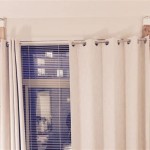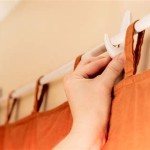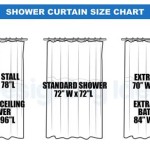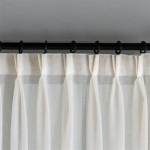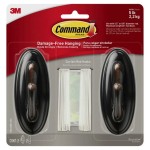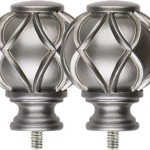How To Hang Curtains On A Door
Adding curtains to a door can enhance privacy, control light, and add a decorative touch to a room. Whether it's a patio door, a closet door, or an interior door, choosing the right hardware and following the correct installation steps will ensure a polished and functional result.
Choosing the Right Hardware
The type of door and the desired curtain style will dictate the appropriate hardware. Several options are available, each with its own advantages:
Tension rods: These are ideal for lightweight curtains and doors where drilling is not desired. They are easy to install and remove, making them a popular choice for renters.
Standard curtain rods: These rods require brackets that are screwed into the door or the surrounding wall. They offer more stability and can support heavier curtains compared to tension rods.
Traverse rods: These rods feature a cord and pulley system that allows curtains to be opened and closed smoothly. They are well-suited for wider doors and heavier fabrics.
Magnetic rods: Similar to tension rods, magnetic rods adhere to metal doors without the need for drilling. They are a convenient option for doors made of steel or other magnetic materials.
Measuring and Preparing
Accurate measurements are crucial for ensuring the curtains fit properly and function as intended. Before purchasing any hardware or curtains, carefully measure the door:
Width: Measure the width of the door, including any trim or molding that the curtains should cover. This measurement determines the length of the curtain rod.
Length: Measure from the top of the door where the rod will be installed to the desired length of the curtain. Consider whether the curtains should graze the floor, pool slightly, or end at the windowsill (if applicable).
Once measurements are taken, mark the desired locations for brackets or other hardware on the door and surrounding wall. Ensure the markings are level and symmetrical.
Installing the Hardware
The installation process varies depending on the chosen hardware. Always follow the manufacturer’s instructions for specific guidance.
Tension rods: Extend the rod slightly longer than the width of the door frame and then compress it to fit snugly within the frame. No screws or drilling are required.
Standard rods & Traverse rods: Drill pilot holes at the marked locations and use screws to secure the brackets to the door or wall. Once the brackets are installed, place the rod into the brackets and secure it according to the manufacturer’s instructions.
Magnetic rods: Simply position the magnetic rods on the metal door frame. The magnets will hold the rods in place without any additional hardware.
Hanging the Curtains
After the hardware is securely installed, it's time to hang the curtains. Different curtain heading styles require different hanging methods:
Grommets: Slide the grommets onto the rod, ensuring they are evenly spaced.
Pleats (Pinch, Box, etc.): Attach the curtain hooks to the pleats and then hang the hooks onto the rings or gliders on the rod.
Rod Pocket: Slide the rod through the pocket at the top of the curtain panel.
Tabs: Loop the fabric tabs over the rod.
Considerations for Different Door Types
The type of door will influence the hanging method and hardware choices. Consider the following:
Patio Doors: Longer rods and heavier curtains might be necessary to adequately cover the larger surface area. Traverse rods offer convenient operation for frequent opening and closing.
Closet Doors: Lightweight curtains and tension rods or magnetic rods are often suitable choices. Ensure the curtains don't interfere with the door's operation.
Interior Doors: Standard curtain rods or tension rods can be used, depending on the weight of the curtains and the desired aesthetic.
Troubleshooting Common Issues
Occasional issues may arise during or after installation. Here are a few common problems and their solutions:
Curtains are too long: Use iron-on hem tape or traditional sewing methods to shorten the curtains to the desired length.
Rod doesn't stay in place: Ensure the tension rod is properly adjusted or that the brackets for standard rods are securely screwed into the door or wall. Consider using stronger anchors if needed.
Curtains don't slide smoothly: Check for obstructions on the rod or ensure the rings or gliders are functioning correctly. Lubricate the rod with silicone spray if necessary.
Choosing the Right Fabric
The fabric choice significantly impacts the functionality and appearance of door curtains. Consider the following factors:
Light control: Heavier, lined fabrics provide better light blocking and privacy. Lighter fabrics offer a more airy and translucent effect.
Privacy: Opaque fabrics offer greater privacy, while sheer fabrics allow light to filter through.
Durability: Choose fabrics that can withstand frequent handling and exposure to sunlight, especially for patio doors.
Style: Select a fabric that complements the room's decor and creates the desired ambiance.

Curtains On Doorways Creative Concealments The Inspired Room

Creating A Door Curtain Ideas Tips For Your Home

How To Hang Curtains On French Doors With Ease

Creating A Door Curtain Ideas Tips For Your Home

Curtains On Doorways Creative Concealments The Inspired Room

How To Hang Curtains On French Doors With Ease

Creating A Door Curtain Ideas Tips For Your Home

How To Hang Curtains 15 Steps With Pictures Wikihow

Front Door Curtains

French Door Curtains Ideas Photos Tips At Spiffy Spools

